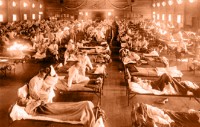by: Maureen Wlodarczyk
Â

When I was five years old, we moved from Jersey City to Union Beach, a place where my parents could afford to purchase a small ranch house with carport. For many years after, I spent two to three weeks each summer back in Jersey City, visiting my maternal grandparents at their apartment on Rose Avenue in Greenville. I loved staying with them and being the center of my grandmother’s attention. My grandparents never owned a car so my grandmother and I would take the bus to Journal Square to shop or see a movie. One summer I unexpectedly came down sick, very sick. My grandmother tucked me in up to my chin in her own bed and called for the family’s faithful physician, Dr. Front. He was what used to be called a (very) “tall drink of water,†and had to duck his head when coming through the doorways of the apartment. When he appeared at my bedside, I am told that my eyes opened wide like saucers. No doubt. Looking up from my sickbed to take in the whole of him was quite an experience. His diagnosis: the grippe.
Today, the word grippe, coming from a French word meaning “seize suddenly,†has been replaced by the modern term “influenza,†the two words being essentially synonymous. For decades before that summer I took sick in Jersey City, Hudson County residents had been stricken by periodic grippe outbreaks including in 1889 and 1892. The most serious of those was the 1918 “Spanish†influenza pandemic that first broke out in Europe and killed thousands of soldiers on the battlefields of World War I before making its way to the United States.   Continue reading Hudson Then . . . Again- INFLUENZA






